Haute Provence
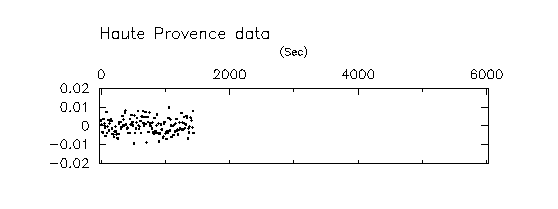
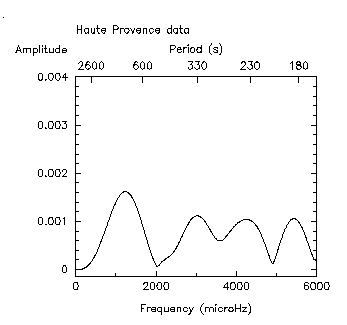
Mauna Kea
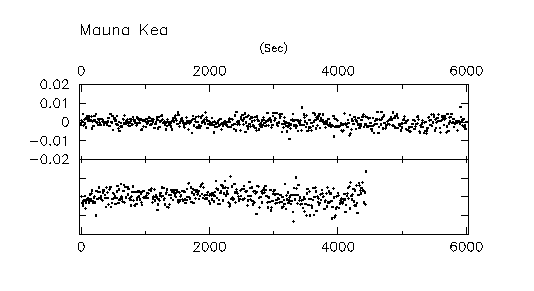
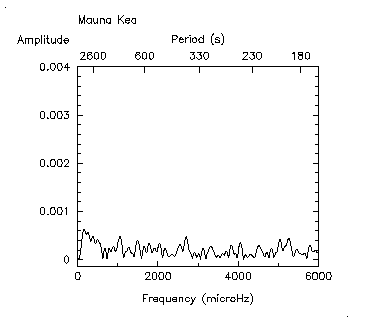
McDonald
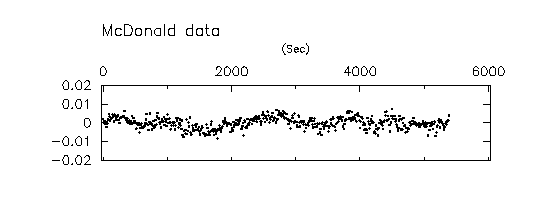
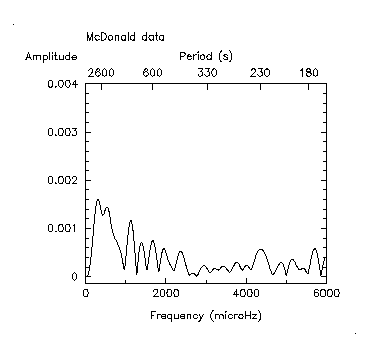
During Xcov 18, a number of sites performed Don Kurtz's "bright star test" in preparation for a possible run on the rapidly oscillating Ap star HR 1217 for Xcov 19 in 2000/2. The results of these tests are summarized here. From Darragh:
Dear All
Here is a summary of the 5 bright star tests submitted as part of xcov18.
Some of the aperture sizes are given as numbers (e.g. #6 means aperture
number 6) and I don't know what that translates to in arcsec on the sky.
Only one person (Jiang) said they were using an R647 Hamamtsu tube. I
assume all the rest were.
Run Obs Tel Phot Filt Aper Star V Npts Counts/10s Obsrvr
Name Size Name mag Ch1* Sky
HD11070H OHP 1.93m Ch3ch - 35" HD219831 9.9 312 3.5e6 2.1e5 Gerard
Vauclair
Remark: Cloud affected this run at the start so only 1/2 hr could be saved.
The second run sent (HD11070I) also had cloud from which nothing
could be salvaged. Thus the test is inconclusive. It is still a
little
worrying that the point-to-point scatter in the salvaged part of
the first run is so high (compare the light curve with the others
below).
jxj9936 BAO 0.85m P45b B 46" HD215093 7.0 192 3.7e6 2.8e4 Jiang
& Xu
Remark: Cloud cut this run off but before it clouded over, the light curve
looks fine.
MDR069 CTIO 1.5m P3Mudgee - #6 HD219831 9.9 570 3.6e6 4.0e4 Mike
(@10"/mm) Reed
Remark: Light curve is fine.
no1599q1 MKO 0.6m NZ3ch B #5 HD209548 ? 1027 8.0e5 ? Denis
& Tiri
Sullivan
Remark: Data are fine. I think (but correct me Denis if I am wrong)
that you were observing the HD star which has a planetary
transit (which is why you observed so long and didn't measure
sky)?
tsm-0060 McD 2.1m P3Mudgee B #7 HD219831 9.9 552 2.0e6 2.7e4 Travis
Metcalfe
Remark: The point-to-point scatter in this run is fine, but there are
worrisome wobbles in the light curve. This is unlikely to be
due to light losses from the aperture (e.g. too small aperture
or flaring seeing or bad guiding) as in my experience that
produces a downward scatter and no upward scatter. Either there
are sensitivity drifts in the photometer or, most likely in my
view, McDonald had a dusty atmosphere on that night. Ch2 shows
similar but not perfectly correlated wobbles. Don Kurtz is also
worried about this run but remarks that at 2600 muHz, the main
frequencies in HR1217, the noise level is acceptable.
Conclusion: I believe that three runs showed perfectly acceptable data,
the McDonald data were probably affected by dust but were
just usable and the OHP data were too short to tell (but
with a worryingly large scatter).
I believe that, with attention to the issues raised, it is
sensible to go ahead and schedule HR1217 for 2000 Nov.
Here is what Don Kurtz has to say about the OHP, Hawaii and McDonald data
(his assessment of the BAO and CTIO data are already on the xcov18
web page: /xcov18/dwk/dk1.html):
"From dkurtz@maia.saao.ac.za Thu Feb 17 13:53:08 2000
Date: Thu, 17 Feb 2000 12:51:34 +0200
From: Don Kurtz
To: 'Darragh O'Donoghue'
Subject: RE:
Dear Darragh,
The MKO data are what we typically expect for a 60-cm telescope with a 1.5-hr
run, so they are fine.
The McDonald data suffer from too much transparency variation, when compared
with good data. This night was probably dusty, or had high and variable
humidity. If neither of those conditions were present, then the photometer
needs to be checked out for possible sensitivity drifts. However, with that
said, note that the noise level at 2600 microhz (the frequency of HR 1217) is
sufficiently low that data taken under these conditions would be usable for
HR1217.
The Haute Provence data were obtained under non-photometric conditions, and
are too short in duration to test the potential noise levels. It would be
useful to know how the observer rated that night for photometric quality
compared to "good" conditions at OHP.
Don"
Postscript versions of the light curves and FTs are available.





